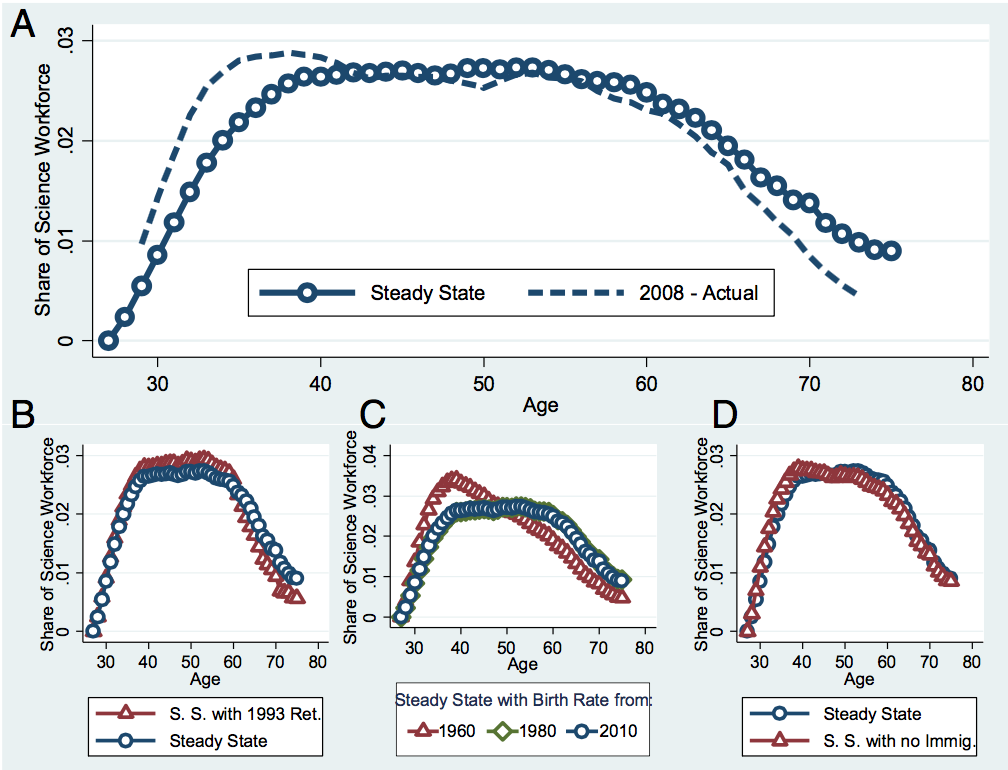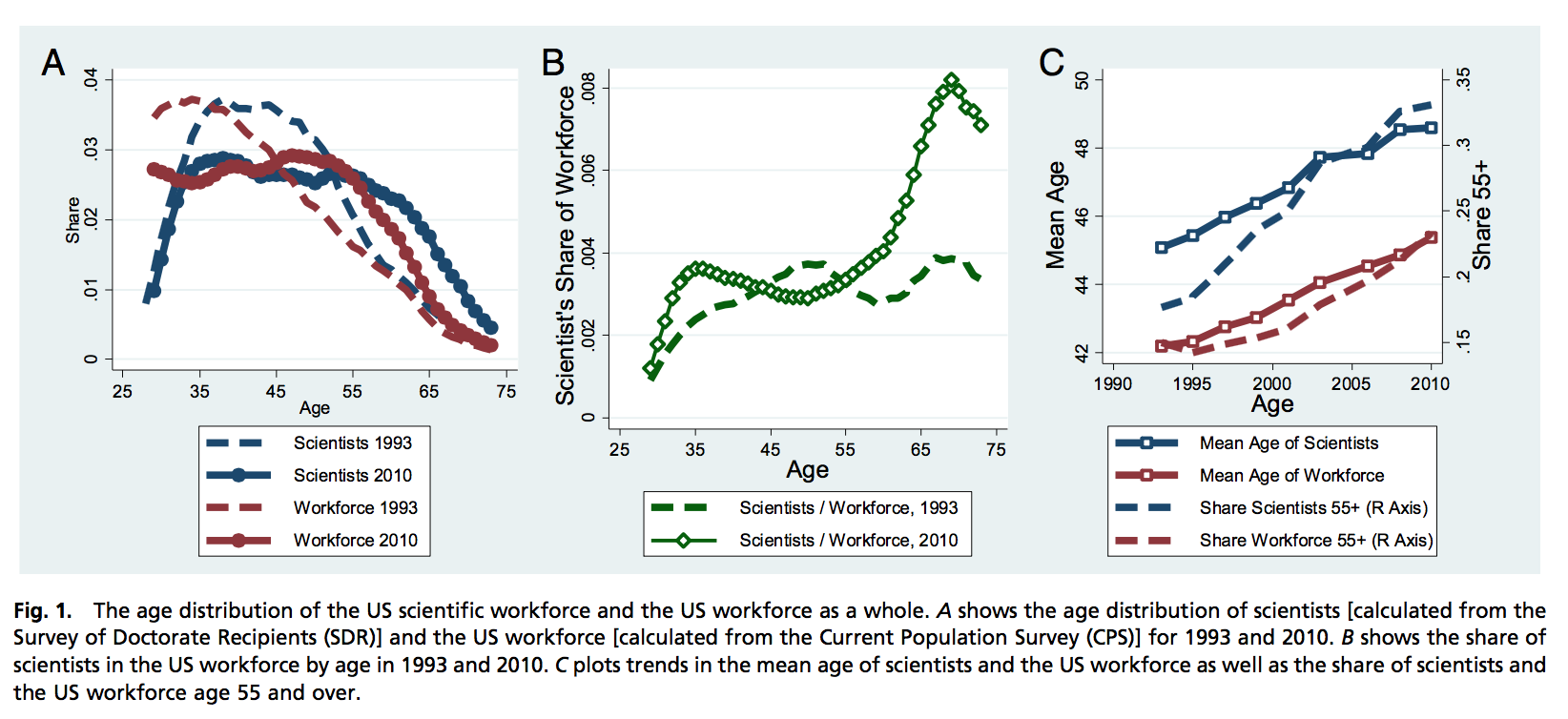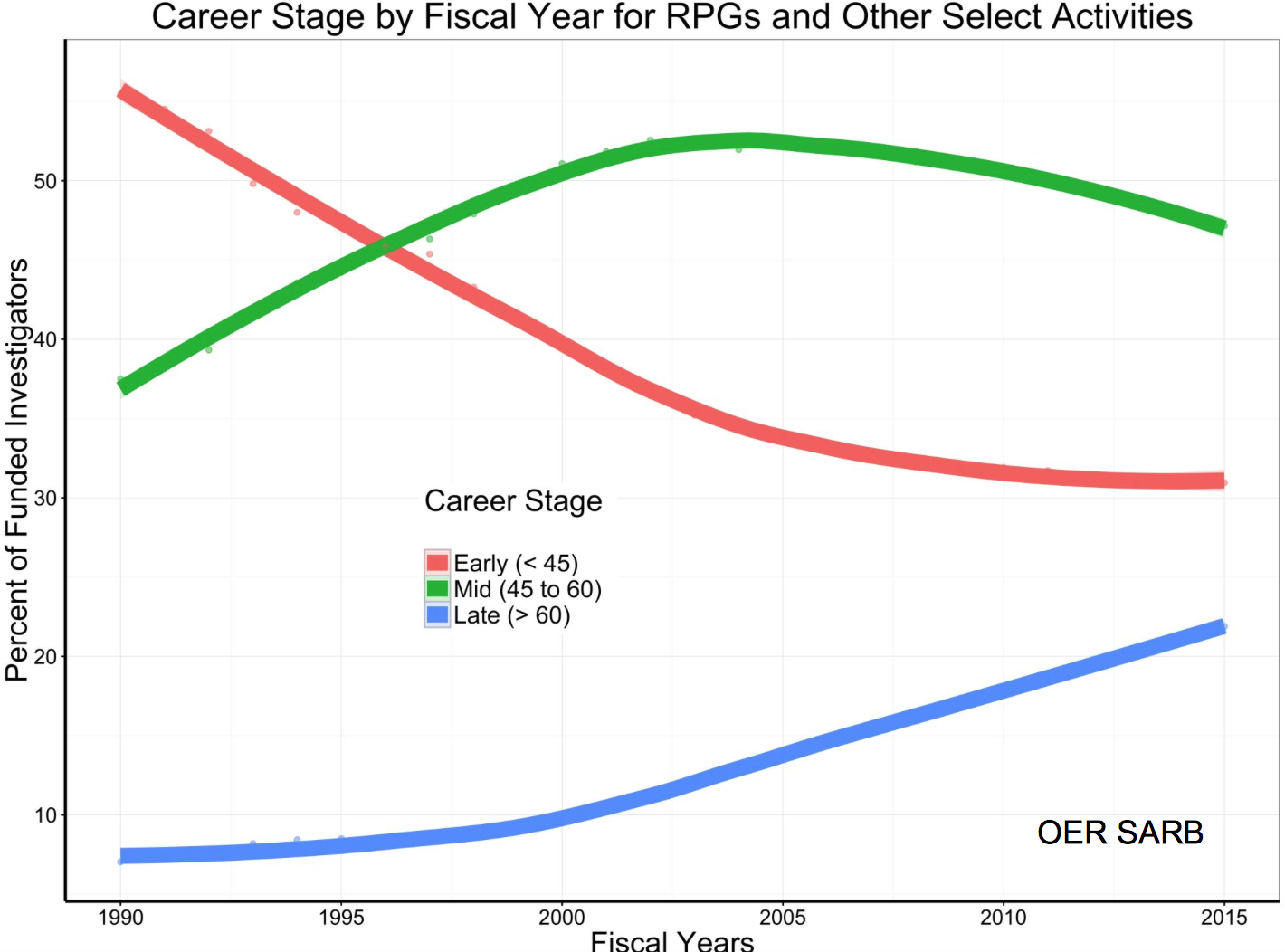You have /5 articles left.
Sign up for a free account or log in.

Getty Images
Blame the boomers -- sort of. While the scientific work force is indeed getting older as baby boomers continue to work past traditional retirement age, the work force will continue to age even after boomers are gone, according to a new study in the Proceedings of the National Academy of Sciences.
The study, by David Blau and Bruce Weinberg, both professors of economics at Ohio State University, found that the average age of employed scientists increased from 45 in 1993 to nearly 49 in 2010. Scientists aged faster than the U.S. work force in general, and across fields -- even newer ones, such as computer and information science. The study includes those with natural and social science, health and engineering degrees.
The trend will only continue, with the average scientist’s age increasing by an additional 2.3 years within the near future, without intervention, according to a model included in the study.
 Blau and Weinberg looked at data from the National Science Foundation’s Survey of Doctorate Recipients, tracking about 73,000 scientists aged 76 or younger. Roughly 40 percent were academic scientists, from tenured professors to staff researchers. The study also relied on some U.S. Census data.
Blau and Weinberg looked at data from the National Science Foundation’s Survey of Doctorate Recipients, tracking about 73,000 scientists aged 76 or younger. Roughly 40 percent were academic scientists, from tenured professors to staff researchers. The study also relied on some U.S. Census data.
The authors attribute much of what they observed about the graying work force to the baby-boom generation, but also to the revocation of the mandatory retirement age for university professors in 1994. "In 1993, the shape of the retirement hazard was similar to, but lower than the typical age pattern of retirement, with a substantial increase in the exit rate between ages 60 and 62, a jump at age 65, and a very large spike at age 70," the study says. "The most recent data show a much slower and more gradual increase in the exit hazard rate, and no major spikes. In particular, the large spike at age 70 in 1993 completely disappeared by 2008."
In 1993, 18 percent of scientists were 55 or older. By 2010, that statistic had jumped to 33 percent. By comparison, the U.S. general work force also aged, but less dramatically, from about 15 percent 55 or older to 23 percent over the same period.

Gender and other demographic shifts had no real impact on the age question, the authors say.
Weinberg said in an interview that he’s interested in the intersection of age and productivity, with the general perception being that one’s scientific contributions decline past a certain age. “That’s at best an oversimplification and maybe wrong, though,” he said -- so an aging population doesn’t necessarily mean less innovative science.
The argument recalls that made in a 2016 paper in Science: that a scientist’s impact is randomly distributed within their papers and is not linked to age.
Still, Weinberg and Blau’s paper raises questions about what the aging work force means for junior scientists -- many of whom are already waiting out faculty or other position as postdocs. He said his study can’t speak to that question directly. But a basic analysis suggests that scientists working longer means not only a more difficult entry-level academic job market, but also a more competitive funding environment for those trying to keep faculty jobs or be promoted, he added. And that’s even before proposed cuts to the federal science budget.
“This operates on two levels,” Weinberg said.
The funding question is of concern to a number of academic groups, including the National Academics of Sciences, Engineering and Medicine, which recently launched the Next Generation Researchers Initiative. The following slide, presented at a January committee meeting by Michael Lauer, deputy director for extramural research for the National Institutes of Health, shows that rates for successful grants are going up for those over 60, but down for both early- and midcareer scientists.

Gary McDowell, a biophysical scientist and resident at Manylabs open science workspace, advocates for junior scientists as executive director of the nonprofit Future of Research (he's also on the committee for the new initiative). He said he left academe at 31 after a series of research positions, in part because the notion that “things wouldn’t be safe for the next 30 years” was “pretty intimidating.”
Over all, McDowell said Weinberg’s data add “to an overwhelming message right now that academia is incredibly tough to persist in.” The question going forward, he added, is “whether the scientific establishment will respond to these data in implementing recommendations that have been suggested over decades of reports, or continue as it has been, with an unsustainable, ever-increasing trainee population being pushed towards stable academic jobs that are neither being created nor vacated.”
Still, McDowell said he wouldn’t want to bring back mandatory retirement for professors. Weinberg also said it wouldn’t be a panacea to the employment and funding problems, or necessarily good for science, since many professors, again, are innovative into older age. And while unproductive professors with tenure may not be fired, he said, academic science can be highly inhospitable to those who hang on past their prime; labs, for example, can be taken away.
“I’m not 100 percent sure what the problem is, but, in terms of a solution, even if we could go back to mandatory retirement, that seems off.”





